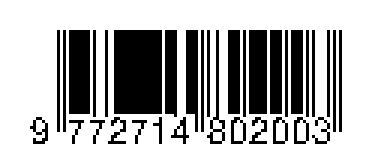STUDI PROSES DEASETILASI PADA PEMBUATAN KITOSAN DARI LIMBAH UDANG
DOI:
https://doi.org/10.34151/technoscientia.v3i2.70Keywords:
Chitin, Deacetylation, ChitosanAbstract
Chitosan is derived from dry shrimp shell that has been demineralized, deprotei-nized, and deacetylized to remove the mineral, protein, and the acetyl group. Chitosan can be used as a food preservative. The aim of this study is to optain the effect of processing time, temperature, solvent volume, and concentration of NaOH in the deacetylation process.In this experiment, the shrimp shell powder had water content and ash content of 5.73% and 29%, respectively. Deproteinization process used a solution of NaOH 5%, processing temperature of 100ºC, and processing time about 2 hours. The process of demineralization used 1N HCl solution, temperature process of 80ºC, and processing time 1 hour. In the deacetylation with fixed variable at at 300 mL of solution of NaOH 40% as a solvent and temperature of 1100C, the relatively good condition of the process is obtained at the processing time of 3 hours. In the experiment with the volume of solvent as a variable, chitosan with optimum of ash content and solution viscosity is reached at the volume of solvent about 300mL. In the experiment with the process temperature are 100ºC and 140ºC, and with the dependent variable, i.e volume of solvent, processing temperature, and concentration of NaOH solution are 300mL, 3 hours, and 40%, respectively, the chitosan with good ash content and viscosity under 200 millipoise is obtained at a temperature of 110°C. In these experiments, chitosan with optimum ash content and viscosity of 1.06% and 175.36 millipoise, respectively, is obtained at processing time, solvent volume, processing temperature, and NaOH concentration at the value of 3 hours, 300 mL, 1100C, and 40%, respectively. The chitosan with optimum characteristics is applied as a coating of tomatoes and grapes. The results shows that the fruits which are dipped into the chitosan solution have a longer lifetime than fruits without preservatives or coated with 1% acetic acid solution.
References
Hartati, F.K., Susanto, T, Rakhmadioni, S dan Loekito, A.S., 2002, Faktor-faktor yang Berpengaruh terha-dap Tahap Deproteinasi meng-gunakan Enzim Protease dalam Pembuatan Kitin dari Cangkang Rajungan (Portunus pelagicus), Biosain, Vol. 2(1), pp. 68-77.
Hirano, S., 1986, Chitin and Kitosan, Ulmann’s Encyclopedia of Industrial Chemistry, Republicka of Germany. 5th edition A6: 231-232.
Marganof, Tarumingkeng, R.C., dan Coto, Z., 2003, Potensi Limbah Udang Sebagai Penyerap Logam Berat (Timbal, Kadmium, dan Tembaga) di Perairan, Makalah Pribadi Pengantar Ke Falsafah Sains, Institut Pertanian Bogor, Bogor, hal. 1-9.
Nadarajah, K., 2005, Development and Characterization of Antimicrobial Edible Film from Crawfish Chitosan, Dissertation in Department of Food Science, University of Peradeniya.
Rinaudo, M., 2006, Chitin and Chitosan: Properties and Applications, Prog. Polym. Sci., 31: 603-32.
Sudarmadji, S., Haryono, B., dan Suhardi, 1984, Prosedur Analisa untuk Bahan Makanan dan Pertanian, Edisi 3, Liberty, Yogyakarta.
Tokura, S. and Nishi, N., 1995, Specification and Characterization of Kitin and Kitosan, pp. 67-78, Collection of Working Papers 28, Univesiti Kebangsaan Malaysia.
Widodo, A., Mardiah, dan Prasetyo, A., 2003, Potensi Kitosan dari Sisa Udang sebagai Koagulan Logam Berat Limbah Cair Industri, Jurnal Jurusan Teknik Kimia ITS.
Yoshida, C.M.P., Junior, E.N.O., and Franco, T.T., 2009, Chitosan Tailor-Made Films: The Effects of Additives on Barrier and Mechanical Properties, Packaging Technology and Science, 22, 161-170.







